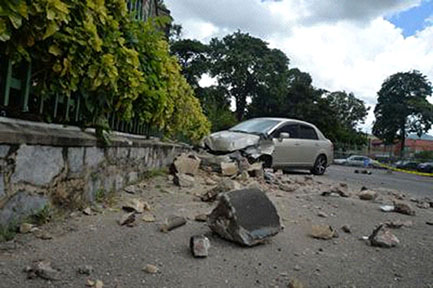(Trinidad Express) Prepare, don’t panic.
This was the advice from seismologist Dr Joan Latchman on what to do when earthquakes occur, especially with the expected “big one”.
Yesterday morning there was another earthquake felt in Trinidad, which registered magnitude 4.0 and which was felt mainly in the south-east coast of Trinidad.
Latchman said earthquakes have always been happening, with an average of 240 events in the Trinidad and Tobago area.
That would mean at least one ‘quake’ every two days.
Latchman said that this is not reason to be rattled, but instead use the information to prepare for impact of events of greater magnitude.
“The reason that people become so panicked is because they are not prepared. The analogy I like to make is when people are preparing for the arrival of a baby, the prospective parents they go to the doctor, they prepare the rooms, they have the clothes – because a baby is a positive thing. Unlike something like a big, damaging earthquake. But it can be viewed in a positive way if you are prepared”, said the seismologist.
Latchman said citizens of Trinidad and Tobago are certainly are not mentally prepared for a high magnitude earthquake.
She said the first ten to 15 seconds of a tremor are very crucial to implementing safety measures, since after 15 seconds there may be structural damages and changes taking place.
“We should soberly consider what our course of action would be when the event occurs, and we would feel more in control when it does happen. I think if we are mentally prepare for it, then the response will not be so panicked”, she said.
On August 21, Trinidad and Tobago experienced a 6.9 earthquake after which there were 32 aftershocks, which included a 6.0 magnitude tremor the following morning.

